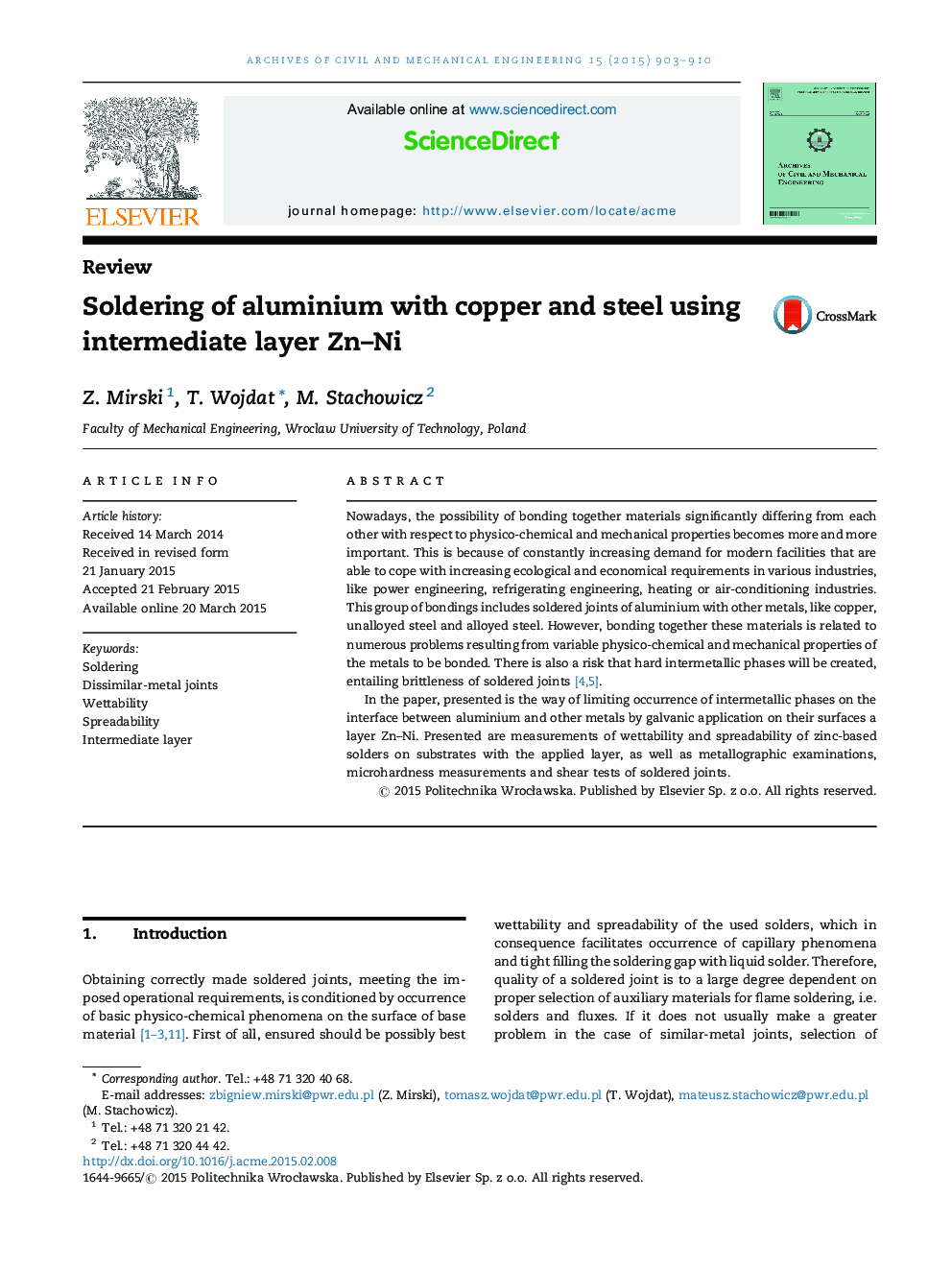| Article ID | Journal | Published Year | Pages | File Type |
|---|---|---|---|---|
| 245938 | Archives of Civil and Mechanical Engineering | 2015 | 8 Pages |
Nowadays, the possibility of bonding together materials significantly differing from each other with respect to physico-chemical and mechanical properties becomes more and more important. This is because of constantly increasing demand for modern facilities that are able to cope with increasing ecological and economical requirements in various industries, like power engineering, refrigerating engineering, heating or air-conditioning industries. This group of bondings includes soldered joints of aluminium with other metals, like copper, unalloyed steel and alloyed steel. However, bonding together these materials is related to numerous problems resulting from variable physico-chemical and mechanical properties of the metals to be bonded. There is also a risk that hard intermetallic phases will be created, entailing brittleness of soldered joints [4] and [5].In the paper, presented is the way of limiting occurrence of intermetallic phases on the interface between aluminium and other metals by galvanic application on their surfaces a layer Zn–Ni. Presented are measurements of wettability and spreadability of zinc-based solders on substrates with the applied layer, as well as metallographic examinations, microhardness measurements and shear tests of soldered joints.
